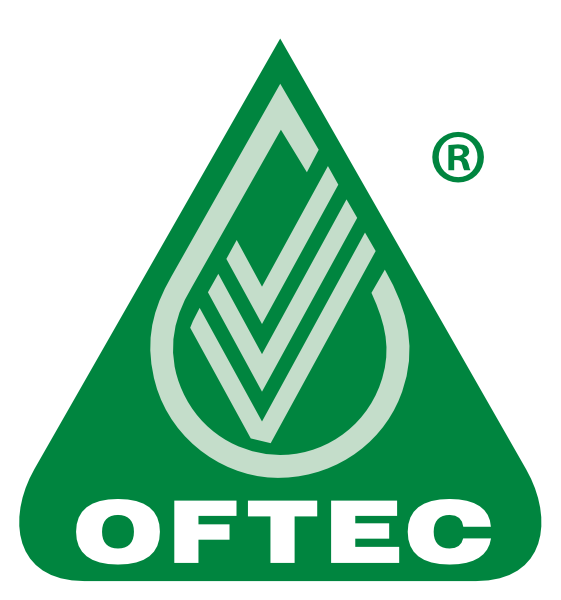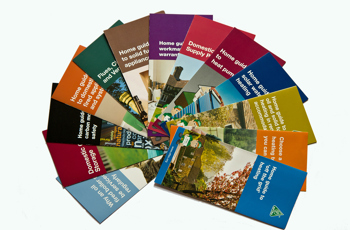Home guide to carbon monoxide safety
The information on this page provides general guidance; your local OFTEC registered technician will be able to provide further advice on your particular circumstances.
What is carbon monoxide?
Carbon monoxide gas (often abbreviated to CO) is produced by the incomplete burning of carbon-based fuels, such as natural gas, liquefied petroleum gas (LPG), oil, wood and coal. All fossil fuel burning appliances, including open fires, stoves, boilers, cookers and even BBQ have the potential to give off carbon monoxide.
Why is carbon monoxide dangerous?
Carbon monoxide gas is sometimes referred to as the "silent killer" because it is colourless, odourless, tasteless and yet extremely poisonous. When humans or animals breathe in carbon monoxide the gas prevents their blood from transporting oxygen around their bodies, which can lead to cell and tissue damage and potentially even death. The Department of Health estimates that 40 deaths and 200 hospitalisations each year in England and Wales are caused by carbon monoxide poisoning.
What are the symptoms of carbon monoxide poisoning?
The signs and symptoms of carbon monoxide poisoning are not always obvious, especially during low-level exposure, and can be mistaken for other ailments and illnesses such as food poisoning or tiredness. Symptoms may be less severe when you are further away from the source of the carbon monoxide. However, the longer you inhale carbon monoxide, the worse your symptoms will be. You may lose your balance, vision and memory, then eventually you may lose consciousness completely and even die.
Other symptoms include:
- Dizziness
- Tiredness
- Headaches
- Pains in the chest or stomach
- Breathlessness
- Erratic behaviour.
- Nausea
Long-term exposure to low levels of carbon monoxide can also lead to neurological symptoms, including difficulty thinking or concentrating, or frequent emotional changes - for example becoming easily irritated, depressed or making impulsive decisions.
How do I prevent carbon monoxide?
Because carbon monoxide is produced by the incomplete burning of carbon-based fuels, it will only usually occur if there is a fault with the cooking or heating appliance, or if there is insufficient air for combustion of the fuel. For example, it could be as a result of poor or inadequate appliance servicing, incorrect installation or lack of air vents for appliances that need them. To avoid problems it is absolutely essential that your appliance is installed correctly and then checked and serviced at least annually by a suitably qualified heating technician. You can find details of OFTEC registered technicians online at www.oftec.org. We don’t recommend that you try to undertake this work yourself.
For peace of mind it is also advisable to fit an audible carbon monoxide detector. You can purchase these from a local hardware shop or online, including from the OFTEC direct shop. Make sure it's approved to the latest British or European Standard (BS Kitemark or EN50291) and installed in the correct location as specified by the manufacturer. Carbon monoxide detectors are designed to be warning devices only and must not be considered as a substitute for scheduled periodic maintenance.
What should I do if I think I have been exposed to carbon monoxide (CO)?
If your carbon monoxide alarm goes off, or if you believe you may have CO poisoning, you should immediately open doors and windows for ventilation, switch off fuel burning appliances and leave the building. Do not use the appliance again until it has been checked and confirmed safe to use by a competent technician. Depending on your symptoms, you should also seek medical advice from your GP or local accident and emergency department. A doctor or nurse may take a blood sample to determine the amount of CO in your blood. Some members of your household may be affected by carbon monoxide poisoning more quickly than others.
Those at particular risk include:
- Babies and young children
- Pregnant women
- People with heart or breathing problems.
- Pets.
The smaller an animal or a person is, the faster CO will affect them. Pets may be the first to show signs of CO poisoning because their size makes them more vulnerable to the effects of the gas. If your pet suddenly becomes ill or dies unexpectedly, you should consider the possibility of a CO leak if it is unlikely to be related to old age or a known health condition.
What should I do if I live in rented accommodation?
Landlords should arrange for heating equipment to be regularly serviced and must install a CO alarm when a solid fuel heating appliance is being used. There are different regional requirements for oil. However, OFTEC recommends that a CO alarm is always fitted. You can find out more in OFTEC’s guide to oil and solid fuel heating in rented accommodation.
And finally...
The heating industry operates to high standards of safety and, as a result, incidents of carbon monoxide poisoning are comparatively rare. However, there are always a few people who don’t follow the rules and if a company is offering their services at dramatically lower prices than their competitors, it may be a sign that they haven’t invested in the necessary training for their staff. If you’re in any doubt about their competence, always ask to see proof of their OFTEC registration as this shows they have received training, passed an assessment and had their work inspected. You can also check our register of technicians here.
Please wait ...



